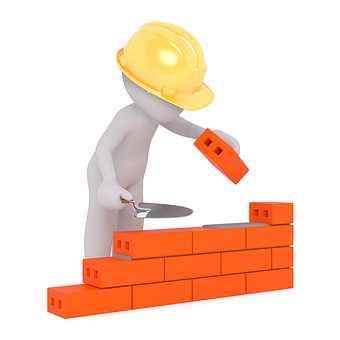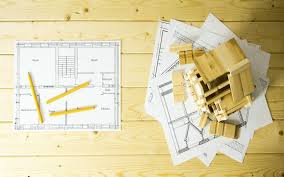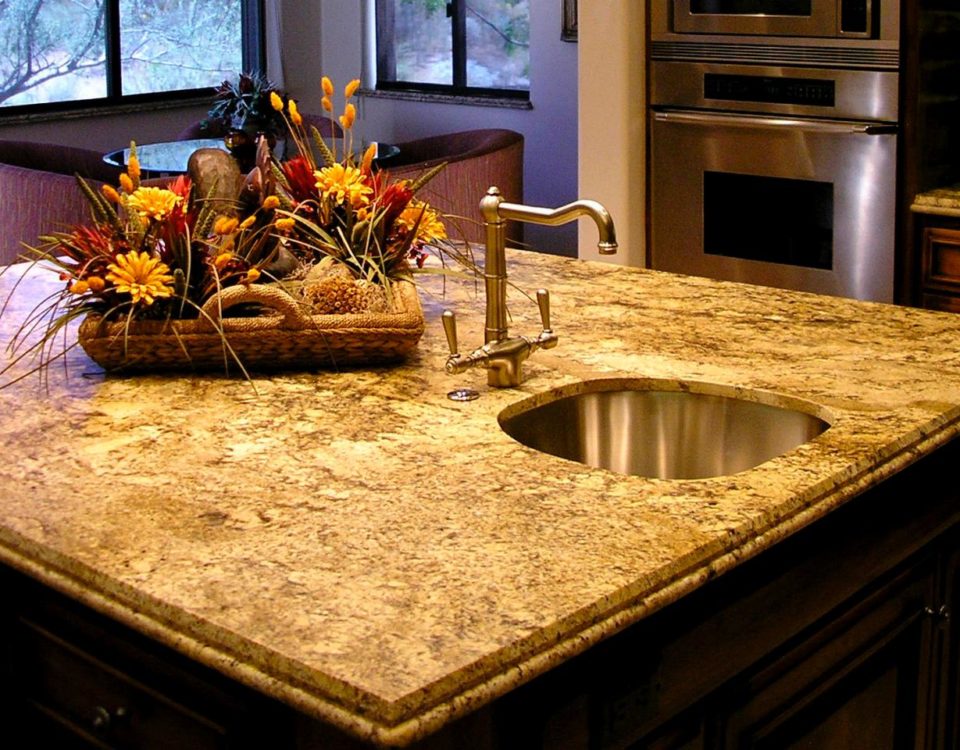
5 Ways to Prevent Storm Damage to Your Home
May 1, 2019
Basement Bathroom: To Add or Not To Add
August 1, 2019Breaking ground on a new home is more than exciting. It’s a once in a lifetime chance for you to make every last cabinet, closet, and paint color speak to you. But the home building process is also something that might make you feel overwhelmed if you’re not aware of the timelines or building stages.
Depending on square footage, weather conditions, the availability of workers and supplies, and more, the home building process can take anywhere from three months to over a year. You’ll need to be prepared to make important decisions along the way and to experience setbacks.
Below is an easy to follow timeline that gives a tremendous amount of insight into the general home building process. From shopping for a lot to move-in day, read on to learn about the major steps you’ll encounter throughout the home building process…
Pre-Build
Before you do anything, you’ll need to find a pre-designed plan or architect to design your home. This is where you’ll see how far your dollars will go and what it will take to make your dreams come true.
In this stage, figure out answers to questions like, “How many square feet do we want/need?”, “Should the master bedroom face east or west?”, and, “Do we want all bedrooms on the second floor?” Hammer out all of these details in this phase to set yourself up for satisfaction in your new home.
Now is also the time to talk to an interior designer if you don’t plan on doing the decorating yourself. They’ll be able to tell you about prints, textures, finishes, and more that will make your home come together.
Purchasing a Lot
No matter if you’re going for a lot that’s in a housing development or a piece of property secluded on 100 acres, you’ll need to purchase land before you can begin the home building process. It’s critical that you allocate part of your budget to your land purchase.
In order to budget wisely, shop around for lots. See what the going rate is per acre and by neighborhood. Make sure the house design you’re working on will fit properly and is zoned to fit on a certain sized property before you make your purchase.
Site Prep
Week 1
Once this stage starts, you can pass the torch to the experts. Everything will be set in stone as far as the look and construction of your home and that barren plot of land you’ve purchased will be prepped and ready to become the site of your new home.
Expect a lot of back hoes and heavy equipment to come with this stage. Workers will be busy clearing, excavating, and leveling the lot according to your architect’s plan. Then, they’ll outline the footprint of your home with stakes. It’ll be the first time that you’ll be able to see the rough shape of your home on your property.
The “Skeleton”
Weeks 2-5
The “three Fs” stand for footings, foundation, and framing. You’ll hear your contractor talk about “pouring the footers” and that entails pouring concrete to support your home’s foundation. Once footers are in place and have passed inspection, the workers will pour the concrete slab of your foundation. Then, your home will have a stable structure for framing.
As the name implies, the floors, walls, and roof will be “framed” out with wood. You can think of this as the skeleton of your home. Once framing is complete, an inspector will come out again to verify that everything has been done to code. After that, exterior finishes like plywood and house wrap will be applied to seal off the inside from the outside.
This stage requires major structural work. Keep in mind that delays might happen if the weather is too wet for concrete to set or failed inspections lead to longer construction time.
Progress
Weeks 6-8
Now that your home has its basic structure, during this part of the home building process workers can begin filling it with the things that make it function and look like a home. Experts will install important mechanicals like heating and cooling units, plumbing lines, and electrical systems. Once that work is done, walls will begin to close up too with insulation and drywall.
Flooring and Paint
Weeks 9-11
Up until this point, all you’ll see on your home building site is a lot of concrete, wood, insulation, drywall, and wires. This is the phase where your home will start to look more like one. Flooring will be going in, cabinets will be hung, and the pretty stuff like trim and mouldings will be installed during this period. Most homeowners will be happy at this stage of the home building process since the site will finally look like the drawings your architect showed you months ago.
Fixtures and Appliances
Week 12
Now is the time when sub-contractors will install faucets, countertops, light fixtures, plugs, and appliances.
Here are some other design resources to help you decide what to do with your home’s interior and exterior.
- Pinterest has a whole section dedicated to DIY and Home Décor
- Apartment Therapy has a lot of user-generated and expert advice about how to transform your home
- Better Homes and Gardens covers all kinds of design projects from plotting out an epic backyard garden to setting up a cozy living room.
- Houzz is a one-stop-shop for all your design needs. It connects you with designers and other home professionals. Houzz provides you with advice about home decorating. The website even shows you where to shop to find certain items.
Final Countdown
Weeks 13-14
The last few weeks of your home building timeline will be a whirlwind of emotion and small details. You’ll be excited, but probably will want to know if it will all come together in time for closing.
Closing
The moment you’ve been waiting for, closing, will be the best! There are just a couple things you’ll need to do before you formally close and move in.
After your home is complete, do a “walk through” of the home. In addition to inspecting it and making a “punch list” of things you want the builder to correct, take note of its features and learn how to work add-ons like the home security network. Once you’re done with all of this, you can close, get the keys to your new home, and enjoy every last detail.
One more piece of advice: One of the best ways to stay on track with your home building timeline is to communicate your needs and wants clearly from the start.
Happy Building!




